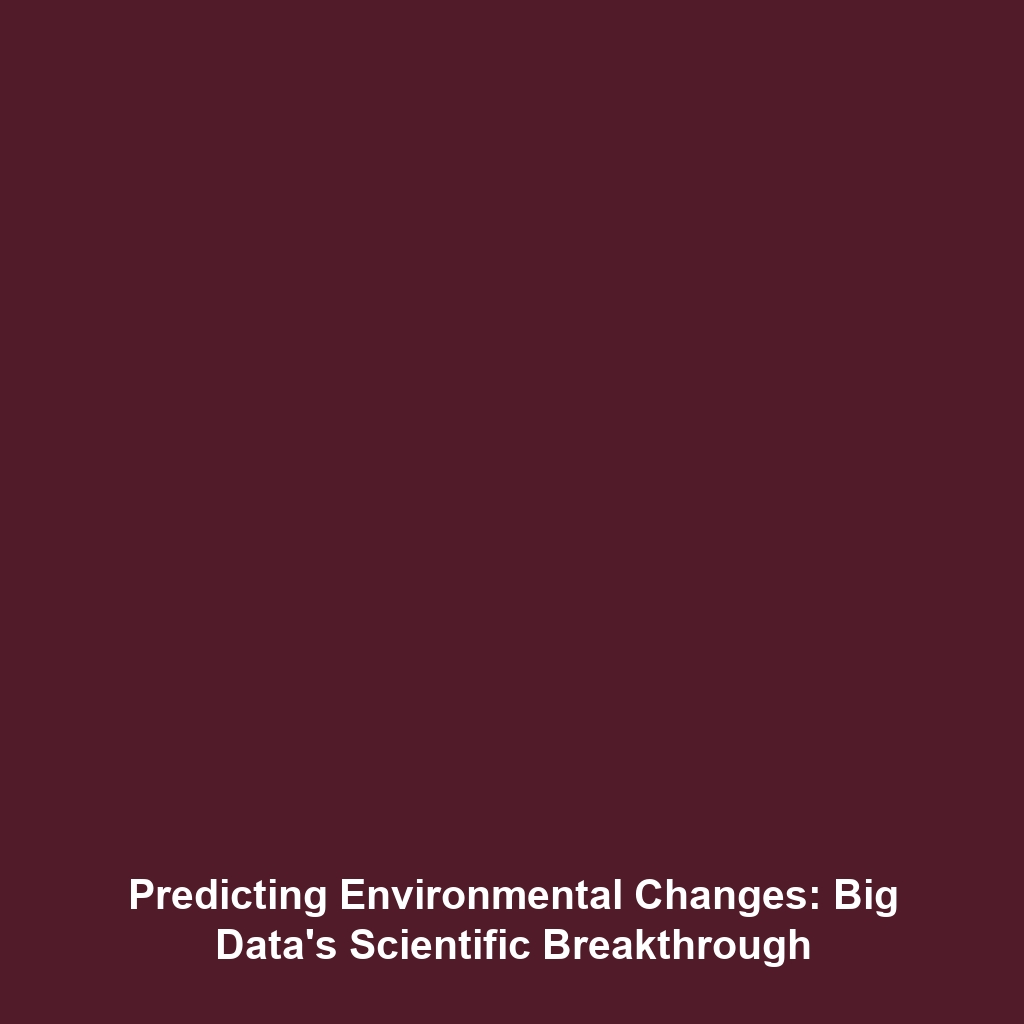Predicting Environmental Changes: The Role of Big Data in Science
In the era of Big Data, predicting environmental changes has become a pivotal component in understanding and managing ecological systems. The ability to analyze vast amounts of data facilitates better decision-making regarding climate change, biodiversity, and resource management. This article delves into the significance of predicting environmental changes within the broader context of Big Data in Science, highlighting essential concepts, applications, challenges, and future innovations.
Key Concepts
Predicting environmental changes incorporates several major concepts that align with Big Data in Science:
- Data Collection: Utilizing sensors, satellites, and IoT devices to gather extensive datasets.
- Data Analysis: Applying statistical models and machine learning algorithms to interpret complex data sets.
- Climate Modeling: Creating simulations to predict future climate scenarios based on historical data.
- Predictive Analytics: Using historical data to forecast environmental changes and assess risks.
These concepts exemplify how Big Data innovations can refine our understanding of environmental dynamics. Keywords such as “environmental forecasting” and “predictive models” permeate discussions of Big Data solutions.
Applications and Real-World Uses
The practical applications of predicting environmental changes are numerous and critical, including:
- Disaster Management: Predictive models help authorities prepare for natural disasters, such as hurricanes and floods, by analyzing weather patterns.
- Conservation Efforts: Big Data enables environmentalists to monitor habitats and species, improving strategies for biodiversity preservation.
- Urban Planning: Cities use predictive analytics to anticipate climate impacts on infrastructure, resulting in more resilient urban designs.
- Agricultural Optimization: Farmers employ data analytics to enhance crop yields by predicting weather patterns.
These examples illustrate how predicting environmental changes is used effectively within the category of Big Data in Science, paving the way for more informed decision-making.
Current Challenges
Despite its benefits, predicting environmental changes faces several challenges that hinder its effectiveness:
- Data Quality: Inaccurate or incomplete data can lead to flawed predictions.
- Interoperability: Diverse datasets from various sources may be difficult to integrate and analyze cohesively.
- Data Privacy: Concerns about the privacy of individuals and organizations can limit data accessibility.
- Cost and Resources: High costs associated with data collection and analysis can be prohibitive, especially for smaller institutions.
Addressing these challenges is essential for improving the accuracy and reliability of predicting environmental changes.
Future Research and Innovations
The future of predicting environmental changes is set to be influenced by several innovations and research directions, including:
- Artificial Intelligence: Enhancements in AI technologies will refine predictive models, providing more accurate forecasts.
- Cloud Computing: Increased availability of cloud infrastructure will facilitate data storage and processing, allowing for larger datasets to be analyzed.
- Real-Time Monitoring: Advances in sensor technologies will enable real-time data collection, leading to immediate predictive insights.
- Public Engagement: Innovative platforms may allow citizens to contribute data, improving the breadth of data available for analysis.
These advancements promise to revolutionize how we approach environmental change prediction, emphasizing sustainable practices informed by data.
Conclusion
In summary, predicting environmental changes is a critical aspect of Big Data in Science that fosters informed decision-making across various sectors. The integration of advanced data analytics, real-world applications, and ongoing innovations make this field a key area of focus for researchers and practitioners alike. For further exploration, consider reading about big data applications in agriculture or climate modeling technologies.

Leave a Reply